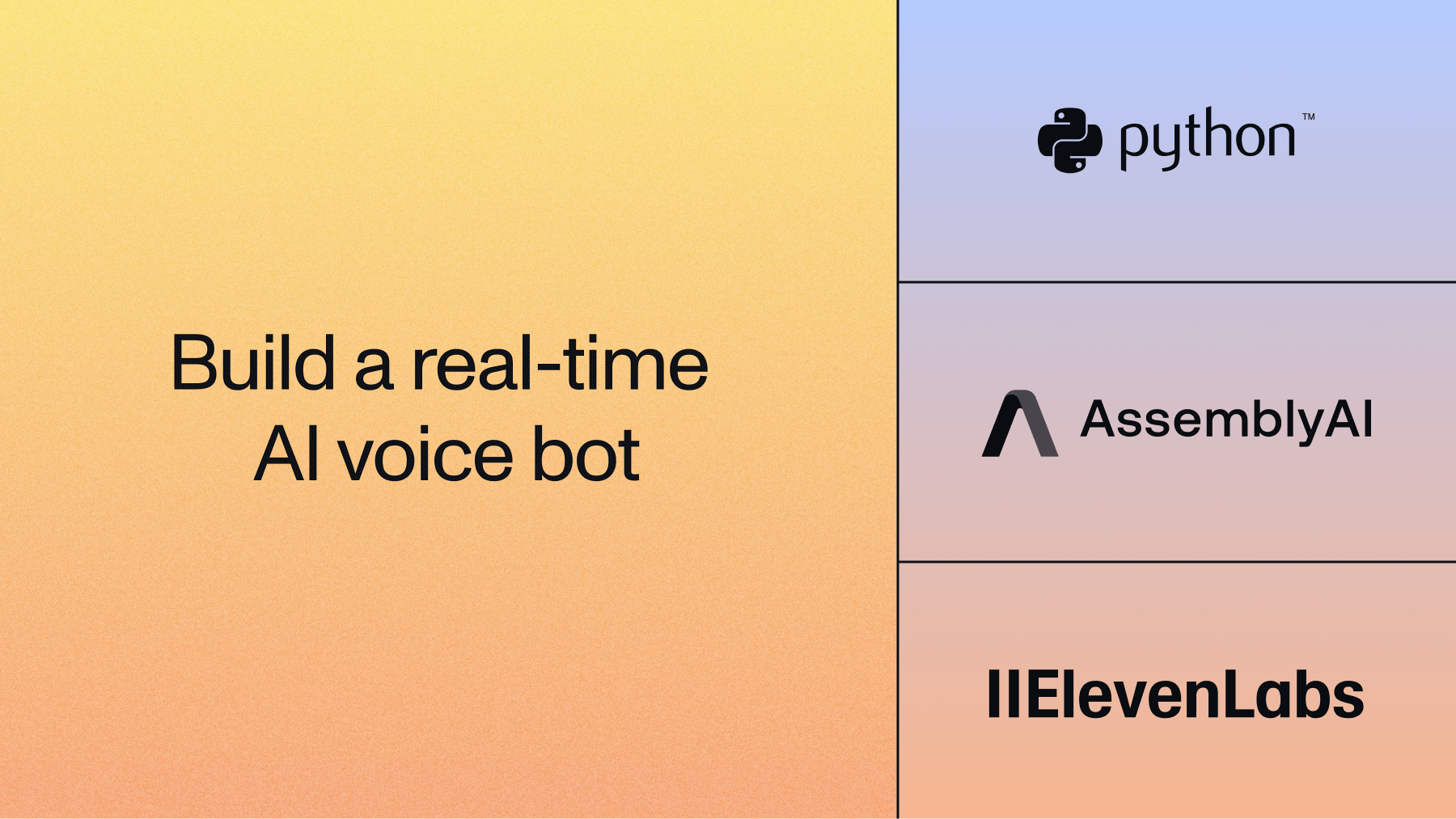5 Benefits of Speech AI for Video Editing Platforms
Learn how to leverage Speech AI for your video editing platform and offer advanced tools like automatic transcription to better serve content creators.



The behind-the-scenes technical aspects of creating video content, like editing and adding subtitles, are time-consuming but necessary. That’s why content creators, including digital marketers and YouTubers, are turning to video editing platforms that offer transformative editing tools—such as automatic keyword detection and smart summaries—built on top of Speech AI models. To capture this demand, leading video editing platforms are figuring out how to best leverage Speech AI to improve features and tools for their customers.
Quality Speech AI models include Automatic Speech Recognition, Audio Intelligence, and Large Language Models (LLMs) to decipher spoken language.
Automatic Speech Recognition (ASR) (often referred to as speech-to-text AI) applies powerful AI models to process audio data into text.
Audio Intelligence models extract information and insights from audio data and can be used for summarization, sentiment analysis, content moderation, and more.
Large Language Models, and frameworks for LLMs like LeMUR, allow companies to build powerful audio analysis apps on top of existing software. With LLMs, businesses can build tools that let their users automatically generate immediate insights from their content, or create a custom summary or action item.
Here are five ways your business can use Speech AI models (like Speech-to-Text, Summarization, and Key Phrase Detection) to help creators produce exceptional videos that resonate with their audience more effectively.
Automate tasks like adding titles and descriptions
AI models to achieve this: Speech-to-Text + Audio Intelligence, Custom Summary
A compelling video title and description are important elements of a video, and can help drive or drop engagement.
Video editing software that integrates Audio Intelligence models can help automate and elevate these tasks. Using tools built on top of the LeMUR framework, creators can quickly detect and summarize the key topics discussed in an audio file. By generating a custom summary, creators can offer a concise preview for their viewers that also captures key SEO, drives more views to the video, or offers a compelling call to action.
Additionally, AI-generated titles and descriptions can be optimized for search engines like Google, making content more discoverable.
Offer advanced automatic transcription and insights
AI models to achieve this: Speech-to-Text + Audio Intelligence, Content Moderation, Custom Vocabulary
The Web Accessibility Standards outline how transcripts are vital for users who may be deaf, hard of hearing, or have difficulty processing auditory information. Providing thorough and accurate transcripts makes content accessible to a wider audience and helps users meet compliance or regulatory guidelines. Adding subtitles also makes videos more searchable on the web.
But it can be a tedious manual process—repeatedly playing back certain words and switching between 2x and 0.5 speed. Instead, tools built with AssemblyAI’s Speech-to-Text AI model automatically transcribe audio files with human-level accuracy.
Advanced Speech AI offers additional features: Does a transcript need to be censored for the audience? Include a function in your platform that helps creators automatically find and filter out any profanity. Is there industry-specific language that isn’t recognizable? Add a feature to upload custom vocabulary that helps optimize results for how specific creators communicate.
Make it easier to produce clips and highlights
AI models to achieve this: Speech-to-Text + Audio Intelligence, Key Phrases
Perhaps a creator wants to create a short, promotional teaser for their video that includes a highlight reel. Maybe they want to send potential sponsors a sample of their content that captures their brand and interests.
With key phrase detection models, content creators can identify significant words and phrases in their transcript and extract the most important highlights from videos. Product teams can integrate this functionality into video editing platforms to build tools that automatically clip the highlighted video or audio portions.
By using such a tool, editors can save time and effort in manually searching for important moments in audio or video content. This can be useful for analyzing content performance or creating engaging clips to share on social media.
Provide accurate subtitles
AI models to achieve this: Speech-to-Text + Audio Intelligence, Speaker Diarization, Automatic Punctuation and Casing, Language Detection
Captions and subtitles are another accessibility must. Poorly generated captions can inaccurately communicate content and result in a very different experience for those with hearing loss or impairment.
The stakes are high for content creators: In 2015, the National Association of the Deaf brought a lawsuit against Harvard University and MIT for publishing videos online without captions.
Editing tools that employ Speech AI can include a function to automatically generate transcripts that can be exported as subtitles and closed captioning files. Additional functionalities could also be integrated into the platform so that creators can fine-tune their subtitle generation to their specific needs. For example, effective models are capable of identifying multiple speakers, using the appropriate punctuation, and supporting multiple languages. Altogether, it can ensure a readable and authentic video experience for all users.
Enable faster distribution of content on social channels
AI models to achieve this: Speech-to-Text + Audio Intelligence, Customized LeMUR Tasks, Sentiment Analysis
Videos are often at the center of a larger content package and may also include social posts like tweets or Instagram captions. Crafting distinct and relevant social posts can be difficult, especially when considering different tones and audiences on each platform.
Video editing platforms that include functionalities for social posts are valuable for users who want to consolidate their process into fewer tools and steps.
For example, companies could integrate the LeMUR framework into a UI that takes custom requests for social media posts related to a transcript. This expedites the process of writing social posts and makes it easy to incorporate keywords and video-specific information.
By automating tasks such as transcription and audio editing, Speech AI frees creators to focus on the creative aspects of video production. Companies can remove the need for tedious administrative tasks and develop tools that help creators in dedicating their time and energy to crafting video content that engages viewers.
Lorem ipsum dolor sit amet, consectetur adipiscing elit, sed do eiusmod tempor incididunt ut labore et dolore magna aliqua. Ut enim ad minim veniam, quis nostrud exercitation ullamco laboris nisi ut aliquip ex ea commodo consequat. Duis aute irure dolor in reprehenderit in voluptate velit esse cillum dolore eu fugiat nulla pariatur.




